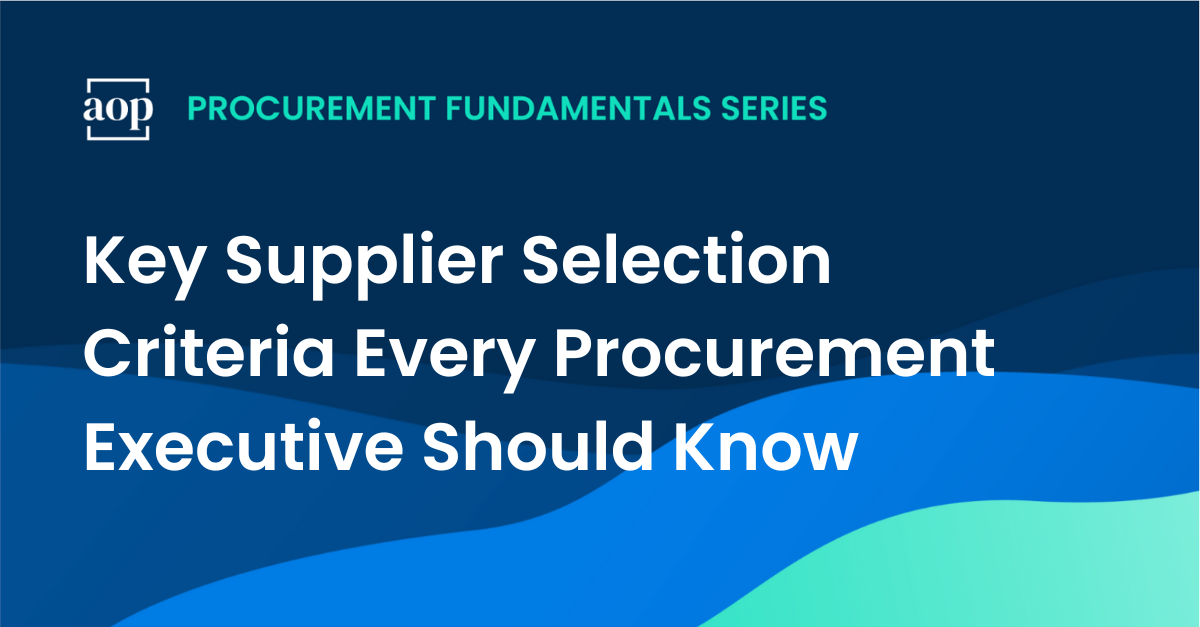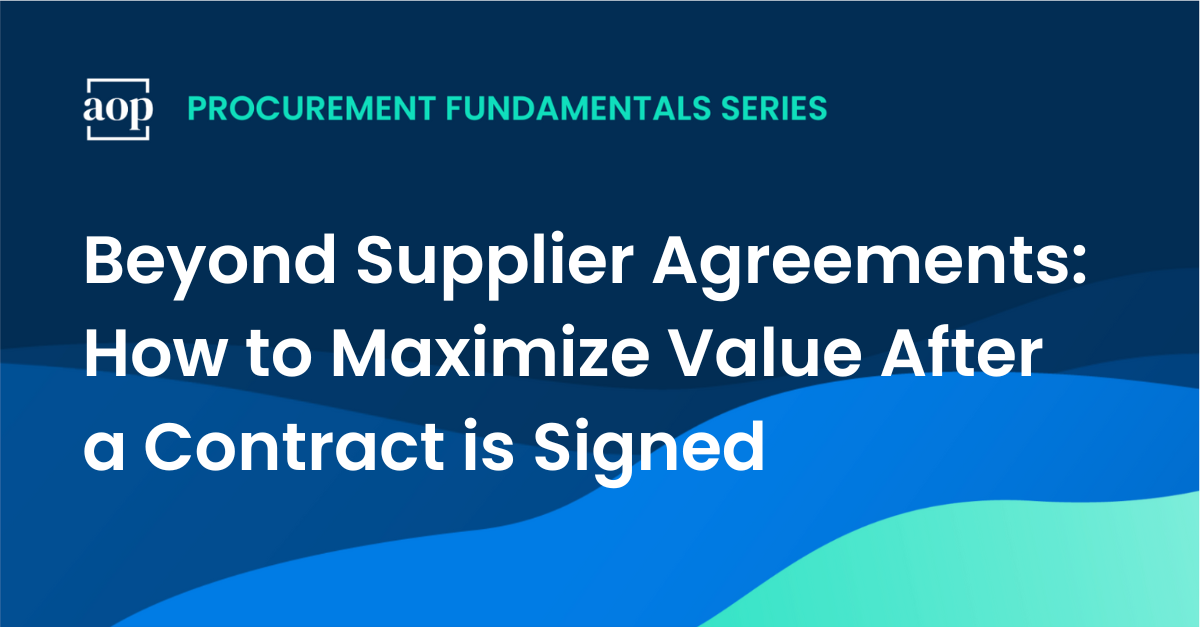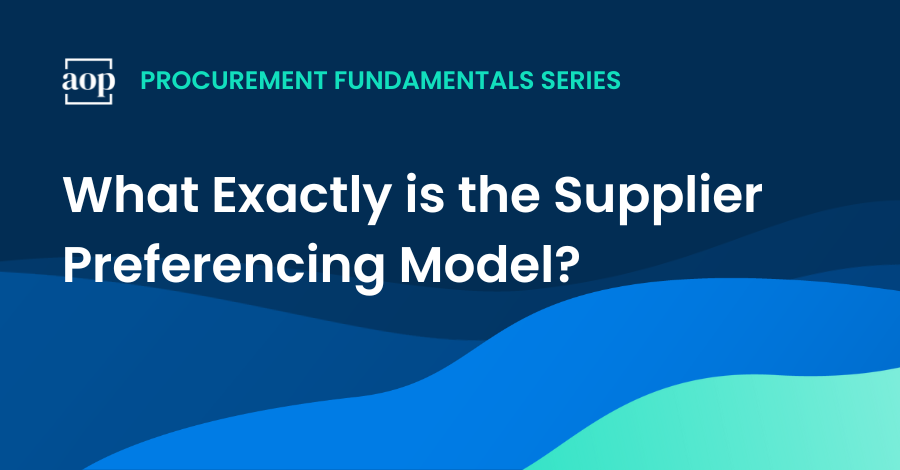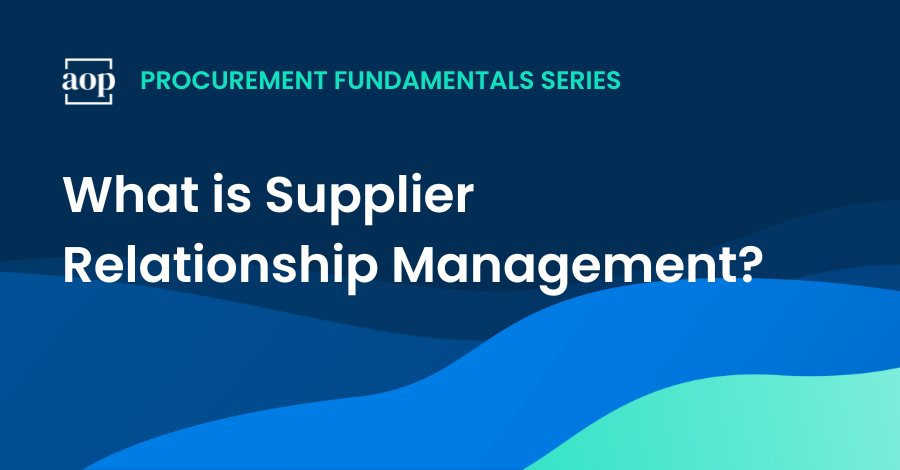6 min read
Key Supplier Selection Criteria Every Procurement Executive Should Know
Philip Ideson : March 21, 2025

Supplier selection is about more than just finding the lowest price. The right suppliers can shape your company’s productivity, innovation, and profitability. You need to weigh factors like total cost of ownership, sustainability, digital capabilities, and resilience to align with long-term business goals.
A structured supplier selection process keeps decisions data-driven, objective, and strategic. By taking a holistic approach, you build stronger supplier partnerships that create lasting value.
A typical supplier selection process
A structured supplier selection process ensures procurement decisions align with business objectives, mitigate risks, and maximize long-term value. Here is a simplified view of what to expect:
- Define selection criteria – Identify key factors such as cost, quality, risk, innovation, and ESG compliance. Align these with business priorities before issuing an RFx.
- Engage stakeholders – Collaborate with internal teams to ensure selection factors reflect operational needs and strategic goals.
- Weight criteria for objectivity – Assign weights to selection factors based on their impact, ensuring decisions go beyond price considerations.
- Issue RFx & gather supplier responses – Develop and distribute an RFx that includes key performance and risk-related questions.
- Evaluate & score responses – Use a decision matrix or scorecard to assess suppliers against the weighted criteria.
- Conduct due diligence – Shortlist suppliers, verify financial stability, assess risk, and confirm compliance.
- Make final selection & negotiate – Choose the best-fit supplier, finalize terms, and establish performance expectations before contracting.
- Monitor supplier performance – Continuously evaluate the supplier’s performance against KPIs and adapt as needed.
Each company’s supplier selection process varies in number or sequence of steps. A structured, step-by-step approach ensures you identify the right suppliers efficiently and strategically.
How supplier selection fits in strategic sourcing
If you follow my 7 step strategic sourcing process, supplier selection factors come to play in Step 4. At this point, you've identified opportunities, built a category profile, and developed a sourcing strategy. Now, you must define price and requirement factors and develop a decision matrix to ensure a balanced, value-driven choice.

Why balanced supplier selection criteria matter
Too often, supplier selection falls into the trap of prioritizing the lowest bid. While cost is important, a price-driven approach can lead to higher risks, inconsistent quality, and supply chain disruptions. Instead, the best procurement teams take a structured, weighted approach to supplier evaluation, ensuring that key decision-makers across the business have a voice in the process.
Start by aligning supplier selection with business objectives
Before you even issue an RFx, supplier selection criteria must be clearly defined. The best practice is to engage stakeholders early—those who will use the product or service—so you can understand what truly matters to them.
When you engage stakeholders, ask them questions like:
- What are the must-haves versus the nice-to-haves?
- Which factors will drive the most impact for the organization?
- How do you rank different selection criteria in order of importance?
From there, a buying committee—including key stakeholders and budget owners—should work together to identify and weight these selection factors. This process ensures that you’re not just making a decision based on gut instinct or historical precedent but on a well-balanced assessment that reflects the organization’s priorities.
For example, if your company is undergoing digital transformation, then a supplier’s technological capabilities could carry more weight than in past evaluations. If regulatory compliance is tightening, ESG performance might move from a secondary consideration to a primary one. By defining and weighting these factors in advance, you build a foundation for smarter, more strategic decision-making.
Five supplier selection criteria you can’t ignore
While specific supplier selection factors will vary based on your industry and business goals, several core elements should always be considered:
- Total cost or total value – The lowest price doesn’t always mean the best deal. Factor in long-term costs, such as maintenance, service quality, and supplier reliability.
- Quality and performance – Can the supplier consistently deliver the required quality standards? Performance history should be analyzed using quantitative data.
- Delivery and reliability – Supply chain disruptions have become a major risk. How does the supplier ensure continuity in times of uncertainty?
- Financial stability – A supplier’s financial health directly impacts its ability to meet commitments over the long term.
- Compliance and regulatory fit – Does the supplier meet industry-specific legal requirements? If not, you could face costly regulatory consequences.
Emerging selection factors that matter more than ever
Procurement leaders must also consider a new set of selection factors that have grown in importance in recent years:
- Sustainability and ESG performance – With increasing regulatory requirements and investor scrutiny, ESG compliance is no longer optional.
- Digital capabilities and innovation – A supplier’s ability to leverage technology can reduce costs and improve service efficiency.
- Risk and resilience – Geopolitical uncertainty, supply chain disruptions, and natural disasters make supplier continuity planning essential.
To keep a balanced view, your supplier selection must go beyond just securing the best price. The real value lies in building relationships with partners who align with your company’s strategic goals and can adapt to change.
Weight selection factors for smarter decision-making
Every business has unique priorities. Some emphasize sustainability and risk mitigation, while others focus on speed and innovation. Assigning weight to selection factors creates a structured evaluation process that aligns with your company’s true needs.
If supply chain continuity is critical due to geopolitical risks, prioritize resilience in your decision matrix. If digital transformation is a key initiative, elevate a supplier’s technology adoption and automation capabilities. Evaluating suppliers through a balanced lens ensures you consider cost, value, risk, and strategic fit.
Weighting selection factors also brings objectivity to the process. Instead of relying on subjective opinions or negotiations, use a scoring system that allows stakeholders to assess suppliers against predefined criteria. This approach shifts procurement decisions beyond the lowest price, focusing instead on long-term value and strategic alignment.
Use a decision matrix or scorecard for supplier selection
A structured decision matrix or scorecard can ensure supplier selection is objective, data-driven, and aligned with the business’s priorities. Rather than relying on subjective opinions or defaulting to the lowest price, this approach helps procurement teams evaluate suppliers based on weighted criteria that reflect strategic goals.
How to build a supplier decision matrix
- Identify Key Selection Criteria – Include core factors such as cost, quality, risk, innovation, ESG compliance, and digital capabilities.
- Assign Weights Based on Importance – Prioritize criteria according to business needs, ensuring that high-impact factors carry more influence in the final decision.
- Score Each Supplier Objectively – Rate suppliers on a scale (e.g., 1 to 5 or 1 to 10) based on their responses, performance history, and due diligence findings.
- Calculate Weighted Scores – Multiply each supplier’s rating by the assigned weight of the criteria, then sum the totals to compare overall scores.
- Validate with Stakeholders – Review results with key stakeholders to ensure alignment before making the final selection.
Example of a supplier scorecard:
|
Selection Criteria |
Weight (%) |
Supplier A |
Supplier B |
Supplier C |
|
Price & Total Ownership (TCO) |
30% |
7 (2.1) |
8 (2.4) |
6 (1.8) |
|
Quality & Performance |
25% |
8 (2.0) |
6 (1.5) |
9 (2.25) |
|
Innovation & Agility |
15% |
6 (0.9) |
9 (1.35) |
7 (1.05) |
|
ESG & Sustainability |
15% |
9 (1.35) |
7 (1.05) |
8 (1.2) |
|
Risk & Resilience |
15% |
8 (1.2) |
7 (1.05) |
9 (1.35) |
|
Total Weighted Score |
100% |
7.55 |
7.35 |
7.65 |
In this example, Supplier C scores the highest based on weighted criteria, despite not offering the lowest cost. This structured approach ensures procurement teams select the supplier that provides the best overall value rather than making decisions based on price alone.
Common pitfalls to avoid in supplier selection
Even experienced procurement teams can make mistakes that derail supplier selection. One of the most common missteps is prioritizing cost over quality, innovation, and risk mitigation. A low-cost supplier may seem like a win on paper, but poor quality, supply chain instability, and reputational risks can drive up long-term operational costs.
Failing to assess a supplier’s long-term viability also creates risks. A supplier might meet today’s requirements but lack the financial stability or strategic vision to support future business needs. Conducting thorough due diligence ensures suppliers can adapt to industry changes and sustain their operations.
Many teams also overlook cultural and operational fit. Even if a supplier meets technical requirements, misaligned communication styles, business ethics, or operational processes can create friction. Companies that evaluate cultural alignment early in the selection process position themselves to have stronger, long-term supplier relationships.
How to improve supplier selection processes
Supplier selection isn’t a one-time event—it requires continuous evaluation and refinement. As business needs shift and market conditions evolve, you need to update your selection criteria to stay ahead.
You can consider asking considered suppliers for feedback after your process has concluded. You may want to engage the same suppliers in other sourcing events, so you’ll want to maintain healthy relationships. This feedback can also help you build a supplier preferencing model to understand and ensure you’re the partner of choice for key suppliers and categories.
Spend analytics can help supplier selection by enabling more informed, objective decisions. For example, you can use detailed information about past deliveries, prices or quality to better understand the performance of an incumbent supplier.
Supplier risk management tools can identify potential vulnerabilities you wouldn’t see in an RFx response. These kinds of data-driven insights reduce reliance on manual assessments and highlight potential risks before they become issues.
It’s smart to review and refine selection criteria over time to ensure alignment with changing business priorities, your position as a buyer in the market and the performance of your chosen suppliers.
Bottom line: develop a balanced approach to supplier selection criteria
Supplier selection criteria vary greatly between different companies and categories of spend. By taking a structured, weighted approach to evaluating suppliers, you can ensure that decisions align with business objectives while balancing cost, risk, innovation, and sustainability.
Supplier selection is about more than just getting the best deal. It’s about forming partnerships with partners who share your vision, can adapt to change, and bring continuous value to the organization. By focusing on the right selection criteria and avoiding common pitfalls, you can build a resilient, future-ready supply base that supports your long-term business success.
Related articles and resources:
- Strategic Sourcing, Explained for Beginners
- How to Start a Strategic Sourcing Process (with My Proven 7-Step Plan)
- How to Create a Category Profile for Strategic Sourcing
- How to Build A Strategic Sourcing Strategy (that Goes Beyond Category and Supplier Management)
- Learn How Google’s Strategic Sourcing Team Became a Trusted Business Partner, with Tim Jones of Google.






